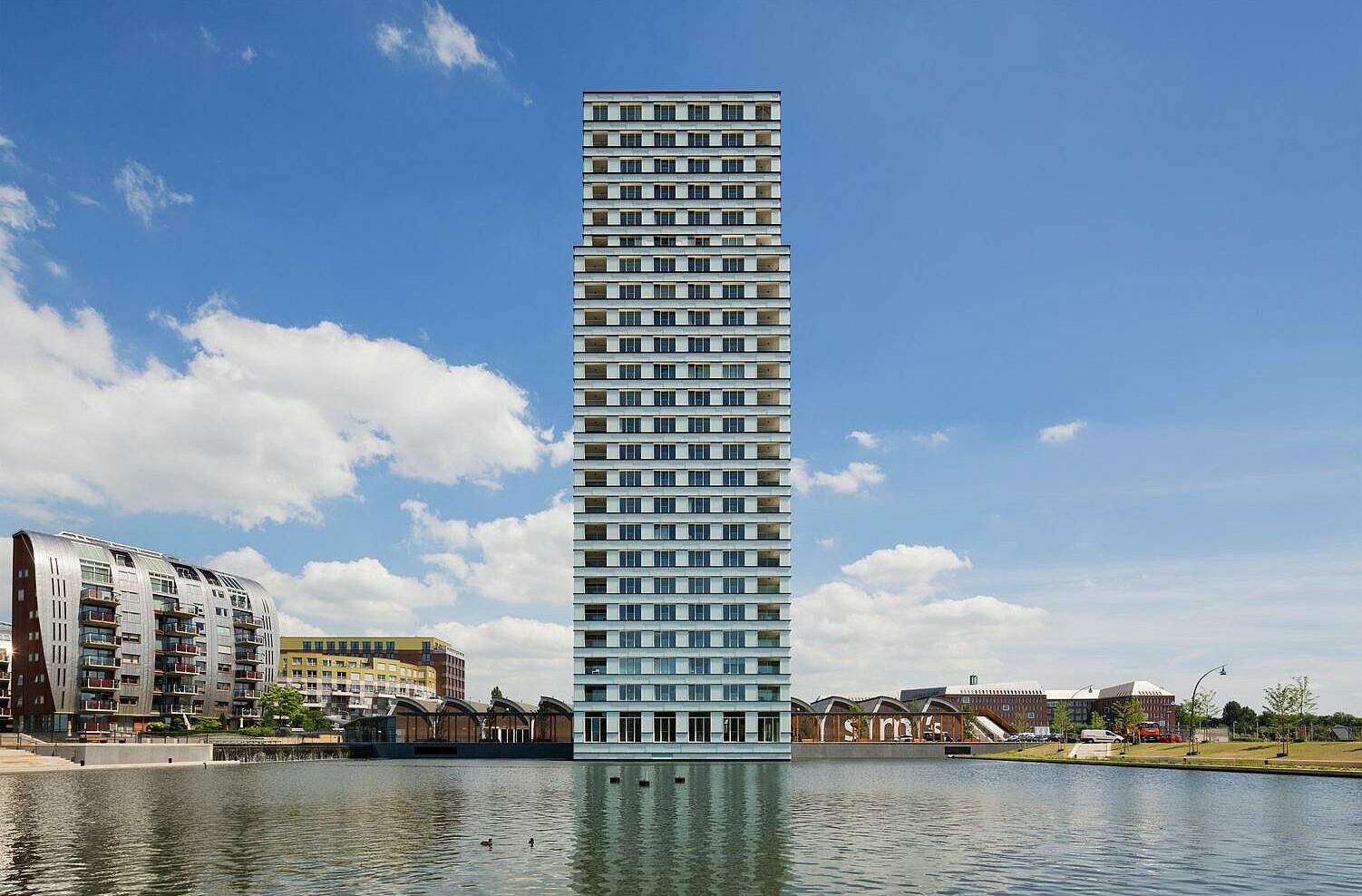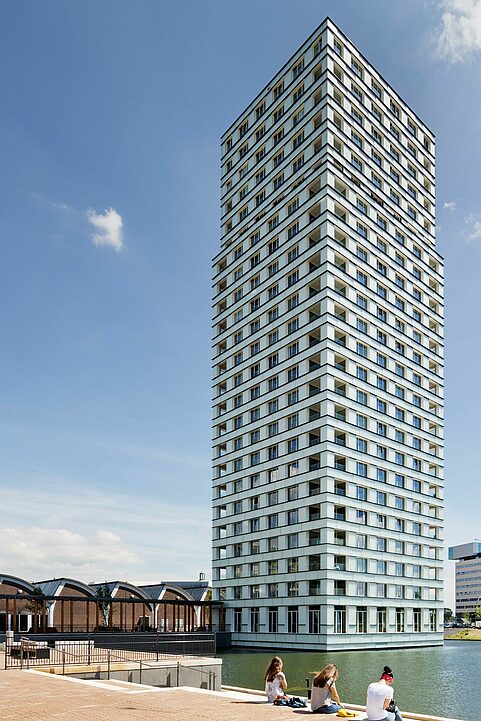More content
Residential

The task here was to design a new residential and office district on a former industrial site facing the medieval old town in the Dutch city of ´s-Hertogenbosch, creating an urban mix of 1,400 apartments, 180,000m2 of office space, schools and restaurants. In particular, the aim was to create a point of reference in this new district
The result was a new landmark building for the city. “Jheronimus”, named after the painter Hieronymus Bosch, who once lived here, is a restrained and elegant 74m-high stand-alone tower. Located at the southern entrance to the new district, it comprises 85 apartments of different sizes spread over 22 storeys and, on the ground floor, shops, cafes and a terrace overlooking the newly created waterway.
A residential tower with charisma
Paying tribute to the medieval cathedral and a 1970s high-rise office building nearby, the block neither towers above them nor outshines them with fanciful forms or garish colours. Instead, its clean square shape forms a calming anchor, bringing together the disparate collection of new builds in the quarter. It offers all the merits of a stand-alone building whilst at the same time making reference to its surrounding built environment.


The structure, with its two staggered heights, is divided into base, shaft and crown. The lower floors have projecting wrap-around balconies, the storeys above integrated loggia. Measuring just 28m x 28m at its base, the tower’s relatively narrow footprint means that most of the apartments look out on at least two sides, giving them something of a penthouse feel. The reinforced concrete construction with load-bearing core and a 3.9m support grid allows flexible space allocation inside. And quality is naturally the order of the day when it comes to materials and insulation.
A sophisticated double-skin façade .
Providing a uniform yet varied envelope, the double-skin façade gives the building a multi-layered surface and enables its occupants to frame their own views. The semi-transparent, patterned outer glass panels provide privacy and protection from the elements. Meanwhile, the top five floors are clad in white plate glass, giving a lighter effect. Subtly suggestive of a light-house, this cladding underscores the building’s understated presence.
Willem Bruijn, Project architect
"One of the project’s particular qualities lies in its great flexibility, not only in terms of its apartment mix and internal space allocation, but also in its ability to adapt to the future."